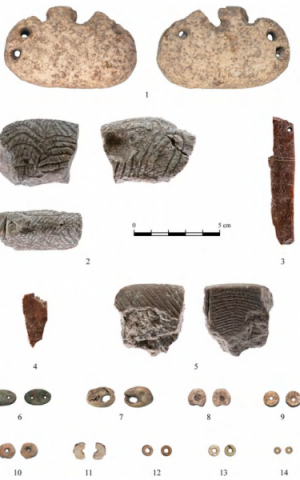PART I
CANADIAN CHARTER OF RIGHTS AND FREEDOMS
Whereas Canada is founded upon principles that recognize the supremacy of God and the rule of law:
Guarantee of Rights and Freedoms
Rights and freedoms in Canada
1. The Canadian Charter of Rights and Freedoms guarantees the rights and freedoms set out in it subject only to such reasonable limits prescribed by law as can be demonstrably justified in a free and democratic society.
FUNDAMENTAL FREEDOMS
Fundamental freedoms
2. Everyone has the following fundamental freedoms:
(a) freedom of conscience and religion;
As reported by Lee Berthiaume of the Ottawa Citizen, February 15, 2016:
OTTAWA — The Liberal government is extending the term of Canada’s ambassador for religious freedom — at least until it can decide what to do with him.Extending the term of Canada's ambassador for religious freedom seems like a good idea, but we need an Office for Religious Freedom within Canada, given the way the "fundamental freedoms" of conscience and religion are being increasingly taken away.
Andrew Bennett’s three-year stint as ambassador was set to expire this coming Friday, but Foreign Affairs Minister Stéphane Dion said Monday it is being extended until at least the end of March as the government weighs “how best to preserve and protect all human rights, including the vital freedom of religion or belief.”
“Dr. Andrew Bennett has shown remarkable ingenuity, sensitivity and competency over the past three years in serving as head of Canada’s Office for Religious Freedom and we are grateful for his continued service,” Dion added in an emailed statement.
Bennett is Canada’s first, and so far only, ambassador for religious freedom after the previous Conservative government established the Office of Religious Freedom inside the Foreign Affairs department (now known as Global Affairs Canada) in February 2013.
While Andrew Bennett’s three-year term as ambassador was scheduled to expire on Feb. 19, the office’s mandate and funding, which was set at about $5 million a year, ran until March 31. By extending Bennett’s term, the two are now on the same timeline.
Despite the extension, it’s widely believed the office’s days are numbered. Speaking at foreign policy conference last month, Dion said the Liberal government would continue to champion religious freedom abroad. But he said religious freedom should not be “disconnected” from other human rights.
“Human rights are interdependent, universal and indivisible,” he said at the time. “How can you enjoy freedom of religion if you don’t have freedom of conscience? Freedom of speech? Freedom of mobility?”
Conservative foreign affairs critics and some faith groups, including organizations representing Jewish, Sikh and Ahmadiyya Muslim Canadians, have asked that the Liberals let the office continue its work. They say its mandate is more important now than ever, thanks to the role of religion in geopolitics.
The government is being urged by representatives of some religious groups to keep the Office of Religious Freedom, as reported by Mr. Berthiaume in the Ottawa Citizen, January 22, 2016:
The Liberal government is facing pressure to keep the Office of Religious Freedom open, after representatives from three influential faith groups wrote Foreign Affairs Minister Stéphane Dion on Friday asking him not to scrap it.As reported by Mr. Berthiaume in the Ottawa Citizen, January 28, 2016:
The open letter from organizations representing Jewish, Sikh and Ahmadiyya Muslim Canadians underscores the potential political cost of shuttering the three-year-old office, which the previous Conservative government established with much fanfare.
The Citizen reported last week that unless the Liberal government intervenes, current Ambassador for Religious Freedom Andrew Bennett’s three-year term will expire on Feb. 18. The office’s mandate and funding, about $5 million a year, will run out on March 31.
Dion spokesman Adam Barratt said at the time that a decision had not been made and the minister was “examining options and how best to build on the work that has been accomplished in the area of religious freedom while promoting human rights as a whole.”
But in a letter to Dion, Centre for Israel and Jewish Affairs CEO Shimon Fogel, World Sikh Organization of Canada president Amritpal Singh Shergill, and Ahmadiyya Muslim Community of Canada national secretary Asif Khan expressed their support for the office’s “valuable work.”
“The Office of Religious Freedom, under the capable stewardship of Ambassador Bennett, has proven an effective advocate in highlighting the issue of religious persecution, partnering with Diaspora communities in Canada, and raising our country’s profile as a world leader in human rights promotion,” the letter reads.
The signatories describe the office’s $5-million budget as “modest,” and note that while the projects it supports abroad “do not always make headlines, we believe they laudably reflect a practical and effective role Canada can play in mitigating the plight of persecuted religious minorities around the world.”
The Office of Religious Freedom was the subject of controversy even before it was established on Feb. 19, 2013. Promised by the Conservatives during the 2011 election, some worried it would be used to selectively champion Christianity, woo certain ethnic voter groups and pursue pet projects of the government.
But Fogel said that religious freedom and tolerance transcend religious and partisan lines. “By joining hands with our friends in the Sikh and Ahmadiyya communities,” he said in a statement, “we are affirming that a diversity of Canadians appreciate the vital and practical work of the Office of Religious Freedom – and believe it should remain a fixture of Canada’s foreign policy.”
“We have joined with our friends in the Jewish and Ahmadiyya communities to express our appreciation for the work being undertaken by the office, and in conveying our hope that the government will continue to strongly support its efforts,” Shergill said in a separate statement.
Some, such as former NDP foreign affairs critic Paul Dewar, have called for the office to be abolished entirely and replaced with an office or organization that will take a more comprehensive approach to promoting human rights abroad.
But the communities represented by the three groups that wrote to Dion on Friday have sizeable communities within Canada, which could make it politically sensitive for the Liberal government to close the Office for Religious Freedom.
Foreign Affairs Minister Stéphane Dion has given his strongest indication yet that the writing is on the wall for Canada’s Office of Religious Freedom.I don't agree with Mr. Dion that "all human rights are together." Even the Liberals' beloved Charter of Rights and Freedoms separates "fundamental freedoms" from others--with "conscience and religion" the first "fundamental freedoms" mentioned.
Speaking at a foreign policy conference Thursday, Dion said the Liberal government, like the Conservatives before them, will continue to champion religious freedom abroad. But he said religious freedom should not be “disconnected” from other human rights.
“Human rights are interdependent, universal and indivisible,” he said. “How can you enjoy freedom of religion if you don’t have freedom of conscience? Freedom of speech? Freedom of mobility?”
The previous Conservative government established the Office of Religious Freedom inside the Foreign Affairs department (now known as Global Affairs Canada) in February 2013. Headed by an ambassador for religious freedom, its mandate is to speak out and work against religious intolerance.
Unless the Liberal government intervenes, however, Andrew Bennett’s three-year term as ambassador will expire Feb. 18. The office’s mandate and funding, which was set at about $5 million a year, also runs out on March 31.
Conservative foreign affairs critics and some faith groups, including organizations representing Jewish, Sikh and Ahmadiyya Muslim Canadians, have asked that the Liberals let the office continue its work. They say its mandate is more important now than ever, thanks to the role of religion in geopolitics.
But Dion, who described theocratism as a major obstacle to advancing of human rights in different countries, said championing all rights is essential. “All rights are together,” he said. “So that will be our approach to see improvements of human rights in Canada and around the world.”














































